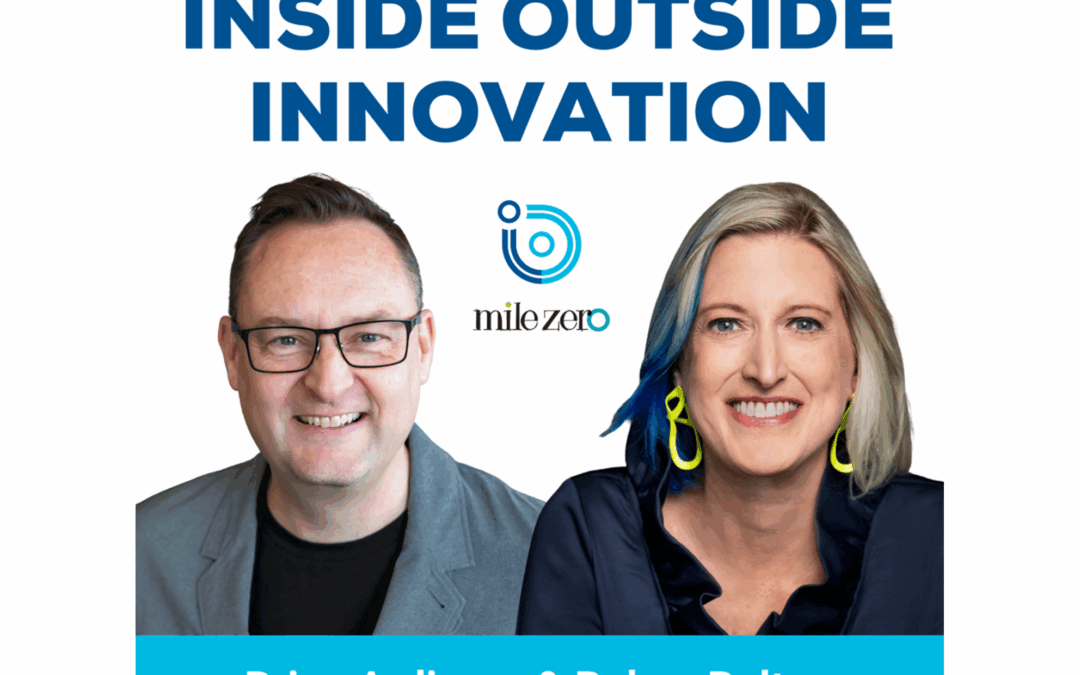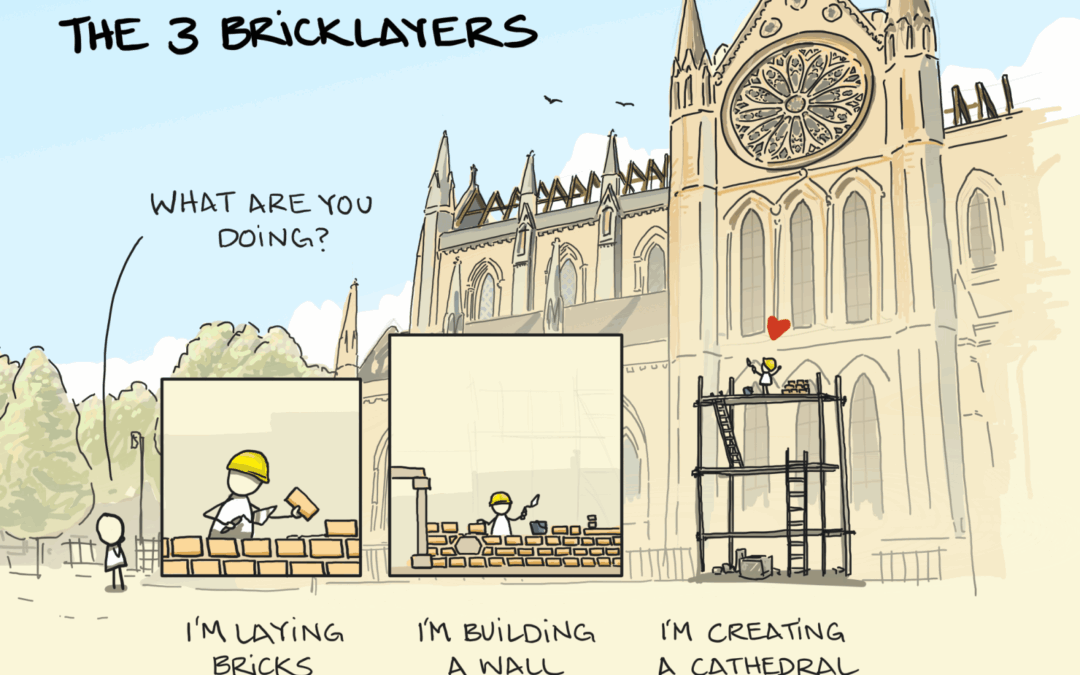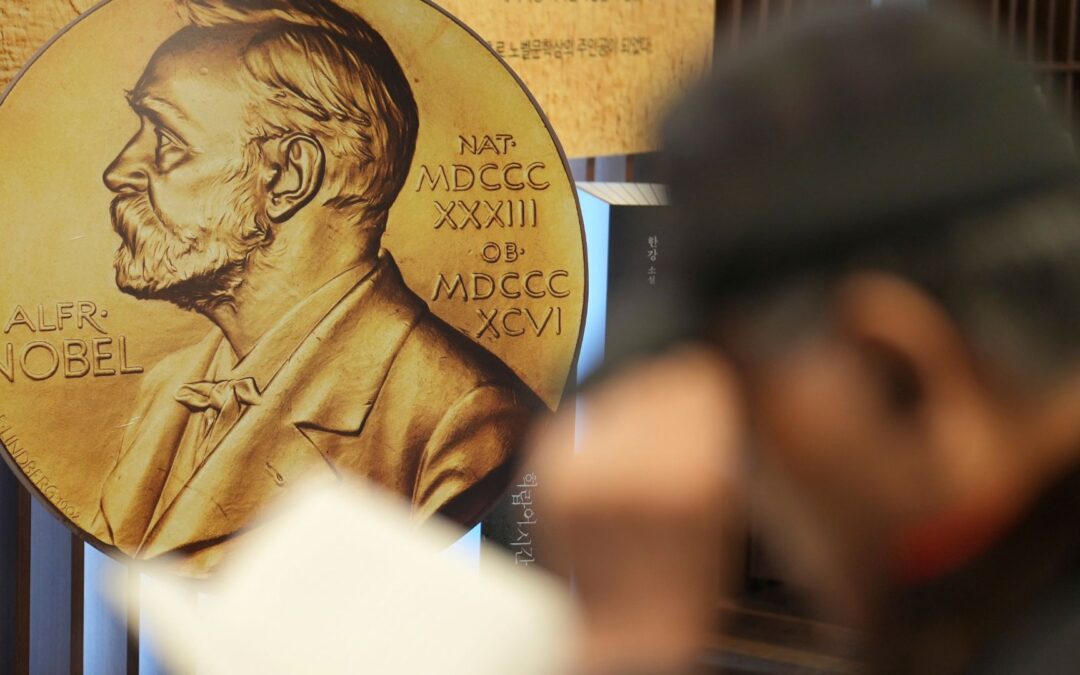
by Robyn Bolton | Oct 28, 2025 | Leadership, Strategy
Last week, I shared that 74% of executives believe that their organizations will cease to exist in ten years. They believe that strategic transformation is required, but cite the obvious problem of organizational inertia and the easy scapegoat of people’s resistance to change.
Great. Now we know the problem. What’s the solution?
The Obvious: Put the Right People in Leadership Roles
Flipping through the report, the obvious answers (especially from an executive search firm) were front and center:
- Build a top team with relevant experience, competencies, and diverse backgrounds
- Develop the team and don’t be afraid to make changes along the way
- Set a common purpose and clear objectives, then actively manage the team
The Easy: Do Your Job as a Leader
OK, these may not be easy but it’s not that hard, either:
- Relentlessly and clearly communicate the why behind the change
- Change one thing at a time
- Align incentives to desired outcomes and behaviors
- Be a role model
- Understand and manage culture (remember, it’s reflected in the worst behaviors you tolerate)
The Not-Obvious-or-Easy-But-Still-Make-or-Break: Deputize the Next Generation
Buried amongst the obvious and easy was a rarely discussed, let alone implemented, choice – actively engaging the next generation of leaders.
But this isn’t the usual “invite a bunch of Hi-Pos (high potentials) to preview and upcoming announcement or participate in a focus group to share their opinions” performance most companies engage in.
This is something much different.
Step 1: Align on WHY an “extended leadership team” of Next Gen talent is mission critical
The C-Suite doesn’t see what happens on the front lines. It doesn’t know or understand the details of what’s working and what’s not. Instead, it receives information filtered through dozens of layers, all worried about positioning things just right.
Building a Next Gen extended leadership team puts the day-to-day realities front and center. It brings together capabilities that the C-Suite team may lack and creates the space for people to point out what looks good on paper but will be disastrous in practice.
Instead, leaders must commit to the purpose and value of engaging the next generation, not merely as “sensing mechanisms” (though that’s important, too) but as colleagues with different and equally valuable experiences and insights.
Step 2: Pick WHO is on the team without using the org chart
High-potentials are high potential because they know how to succeed in the current state. But transformation isn’t about replicating the current state. It requires creating a new state. For that, you need new perspectives:
- Super connecters who have wide, diverse, and trusted relationships across the organization so they can tap into a range of perspectives and connect the dots that most can barely see
- Credible experts who are trusted for their knowledge and experience and are known to be genuinely supportive of the changes being made
- Influencers who can rally the troops at the beginning and keep them motivated throughout
Step 3: Give them a clear mandate (WHAT) but don’t dictate HOW to fulfill it
During times of great change, it’s normal to want to control everything possible, including a team of brilliant, creative, and committed leaders. Don’t involve them in the following steps and be open to being surprised by their approaches and insights:
- At the beginning, involve them in understanding and defining the problem and opportunity.
- Throughout, engage them as advisors and influencers in decision-making (
- During and after implementation, empower them to continue to educate and motivate others and to make adaptations in real-time when needed.
Co-creation is the key to survival
Transforming your organization to survive, even thrive, in the future is hard work. Why not increase your odds of success by inviting the people who will inherit what you create to be part of the transformation?

by Robyn Bolton | Oct 23, 2025 | Speaking

by Robyn Bolton | Oct 23, 2025 | Podcasts

by Robyn Bolton | Oct 19, 2025 | Leadership, Leading Through Uncertainty
One day, an architect visited the building site of his latest project. There he saw three people all laying bricks. He asked each what they were doing. “I’m laying bricks,” the first responded. “I’m building a wall,” said the second. “I’m building a cathedral,” exclaimed the third.
The parable of the Three Bricklayers is a favorite amongst motivational speakers, urging their audiences to think beyond today’s tasks and this quarter’s goals to commit to a grandiose vision of eternal success and glory.
But there’s a problem.
The narrative changed
The person who had a vision of building a cathedral? They now believe they’re building ruins.
Is the C-Suite Quietly Quitting?
Recently published research found that three out of four executives believe that “without fundamental transformation* their organization will cease to exist” in ten years. That’s based on data from interviews with twenty-four “current or former CEOs who have led successful transformations” and 1,360 survey responses from C-Suite and next-generation leaders.
And, somehow, the news gets worse.
While 77% of C-suite executives report that they’re committed to their companies’ transformation efforts, but 57% believe their organization is taking the wrong approach to that transformation. But that’s still better than the 68% of Next-Gen executives who disagree with the approach.
So, it should come as no surprise that 71% of executives rate their companies’ transformation efforts as not at all to moderately successful. After all, it’s hard to lead people along a path you don’t agree with to a vision you don’t believe in.
Did they just realize that “change is hard in human systems?”
We all fall into the trap of believing that understanding something results in commitment and change.
But that’s not how humans work.
That’s definitely not how large groups of humans, known as organizations, work.
Companies’ operations are driven only loosely by the purpose, structures, and processes neatly outlined in HR documents. Instead, they are controlled by the power and influence afforded to individuals by virtue of the collective’s culture, beliefs, histories, myths, and informal ways of working.
And when these “opaque dimensions” are challenged, they don’t result in resistance,
They result in inertia.
“Organizational inertia kills transformations”
Organizations are “complex organisms” that evolve to do things better, faster, cheaper over time. They will continue doing so unless changed by an external force (yes, that’s Newton’s first law of motion).
That external force, the drive for transformation, must be strong enough to overcome:
- Insight Inertia stops organizations from getting started because there is a lack of awareness or acceptance amongst leaders that change is needed.
- Psychological Inertia emerges when change demands abandoning familiar success strategies. People embrace the idea of transformation but resist personal adaptation, defaulting to comfortable old behaviors.
- Action Inertia sets in and gains power as the long and hard work of transformation drags on. Over time, people grow tired. Exhausted by continuous change, teams progressively disengage, becoming less responsive and decisive.
But is that possible when 74% of executives are simply biding their time and waiting for failure?
“There’s a crack in everything, that’s how the light gets in.”
Did you see the crack in all the doom and gloom above?
- 43% of executives believe their organizations are taking the right approach to transformation.
- 29% believe that their organizations’ transformations have been successful.
- 26% believe their company will still be around in ten years.
The majority may not believe in transformation but only 33% of bricklayers believed they were building a cathedral, and the cathedral still got built.
Next week, we’ll explore how.

by Robyn Bolton | Oct 13, 2025 | Innovation, Leading Through Uncertainty
As a kid, you’re taught that when you’re lost, stay put and wait for rescue. Most executives are following that advice right now—sitting tight amid uncertainty, hoping someone saves them from having to make hard choices and take innovation risk.
This year’s Nobel Prize winners in Economics have bad news: there is no rescue coming. Joel Mokyr, Philippe Aghion, and Peter Howitt demonstrated that disruption happens whether you participate or not. Freezing innovation investments doesn’t reduce innovation risk. It guarantees competitors destroy you while you stand still.
They also have good news: innovation follows predictable patterns based on competitive dynamics, offering a framework for making smarter investment decisions.
How We Turned Stagnation into a System for Growth
For 99.9% of human history, economic growth was essentially zero. There were occasional bursts of innovation, like the printing press, windmills, and mechanical clocks, but growth always stopped.
200 years ago, that changed. Mokyr identified that the Industrial Revolution created systems connecting two types of knowledge: Propositional knowledge (understanding why things work) and Prescriptive knowledge (practical instructions for how to execute).
Before the Industrial Revolution, these existed separately. Philosophers theorized. Artisans tinkered. Neither could build on the other’s work. But the Enlightenment created feedback loops between theory and practice allowing countries like Britain to thrive because they had people who could translate theory into commercial products.
Innovation became a system, not an accident.
Why We Need Creative Destruction
Every year in the US, 10% of companies go out of business and nearly as many are created. This phenomenon of creative destruction, where companies and jobs constantly disappear and are replaced, was identified in 1942. Fifty years later, Aghion and Howitt built a mathematical model proving its required for growth.
Their research also lays bare some hard truths:
- Creative destruction is constant and unavoidable. Cutting your innovation budget does not pause the game. It forfeits your position. Competitors are investing in R&D right now and their innovations will disrupt yours whether you participate or not.
- Competitive position predicts innovation investments. Neck-to-neck competitors invest heavily in innovation because it’s their only path to the top. Market leaders cut back and coast while laggards don’t have the funds to catch-up. Both under-invest and lose.
- Innovation creates winners and losers. Creative destruction leads to job destruction as work shifts from old products and skills to new ones. You can’t innovate and protect every job but you can (and should) help the people affected.
Ultimately, creative destruction drives sustained growth. It is painful and scary, but without it, economies and society stagnate. Ignore it at your peril. Work with it and prosper.
From Prize-winning to Revenue-generating
Even though you’re not collecting the one million Euro prize, these insights can still boost your bottom line if you:
- Connect your Why teams with your How teams. Too often, Why teams like Strategy, Innovation, and R&D, chuck the ball over the wall to the How teams in Operations, Sales, Supply Chain, and front-line operations. Instead, connect them early and often and ensure the feedback loop that drives growth
- Check your R&D and innovation investments. Are your R&D and innovation investments consistent with your strategic priorities or your competitive position? What are your investments communicating to your competitors? It’s likely that that “conserving cash” is actually coasting and ceding share.
- Invest in your people and be honest with them. Your employees aren’t dumb. They know that new technologies are going to change and eliminate jobs. Pretending that won’t happen destroys trust and creates resistance that kills innovation. Tell employees the truth early, then support them generously through transitions.
What’s Your Choice?
Playing it safe guarantees the historical default: stagnation. The 2025 Nobel Prize winners proved sustained growth requires building innovation systems and embracing creative destruction.
The only question is whether you will participate or stagnate.




